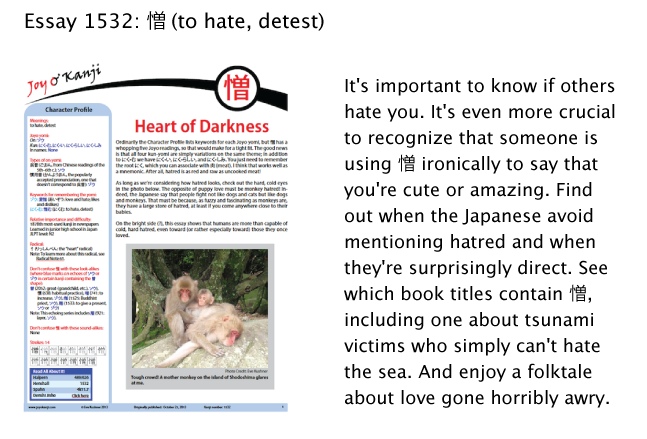Plums at Night
When artist Kazuo Ishii posted his latest painting on Facebook, it blew me away on several levels:

Image Credit: Kazuo Ishii
In case you struggle just as much as I do to read kanji calligraphy, here's what it says on the left of Ishii's artwork:
平成二十五年於以色列 義同
Heisei 25 in Israel Gido
平成 (へいせい: era that began in 1989); 二十五年 (にじゅうごねん: Year 25, which is 2013); 於 (おいて: in); 以色列 (イスラエル: Israel); 義同 (ぎどう: his name as an artist)
As you can see from his site Shiboku Studio, the artist lives and works in Israel!
For starters, the colors remind me of a book that my aunt wrote and published about her three nieces back in 1975. When the Sky Is Like Lace features gorgeous blends of plum and black that form the backdrop to mystical occurrences on one "bimulous" night. That book is one of my happiest childhood memories, though I was always angry about a drawing that had me dressed only in underwear and hideous orange socks. But the story wasn't factual, as you perhaps you can deduce from the cover, where we're dancing with otters.

I reposted Ishii's fabulous painting on Facebook, leading my friend Naohiko-san to write a comment that started with this:
羊羹の「夜の梅」を見るたびに、花の「夜の梅」の景色が偲ばれます。
羊羹 (ようかん: sweet bean jelly); 夜* (よる: night); 梅* (うめ: plum); 見る (みる: to see); たびに (each time); 花 (はな: flower); 景色 (けしき: scene); 偲ばれる (しのばれる: to be brought to mind, come to mind)
I could identify all the words, but I was perplexed. Given that he set off 「夜の梅」twice, it had to mean something besides the most literal interpretation, "plums at night." I searched online, finding that two images were entirely appropriate:
• a sweet bean jelly called 夜の梅 (night plum) that has the same dusky plum-black colors as the painting
• many paintings of white plum blossoms
I asked Naohiko-san which one was right, and it turned out that he meant both! These very different things have a close relationship. The bean jelly is meant to remind people of white plum blossoms at night. In fact, the website for the confectionary Toraya says so right next to its picture of that dessert.
Here, then, is what Naohiko-san wrote, along with subsequent comments and translations:
羊羹の「夜の梅」を見るたびに、花の「夜の梅」の景色が偲ばれます。
Whenever I see the sweet bean jelly called 夜の梅 (night plum), it reminds me of plum blossoms in the shadows of night.
羊羹 (ようかん: sweet bean jelly); 夜* (よる: night); 梅* (うめ: plum); 見る (みる: to see); たびに (each time); 花 (はな: flower); 景色 (けしき: scene); 偲ばれる (しのばれる: to be brought to mind, come to mind)
日本の和菓子は、自然の情景から発想した菓子が多いです。
Japanese confectioners usually get ideas for the shapes of Japanese sweets from natural scenes.
日本 (にほん: Japan); 和菓子 (わがし: Japanese confection);
自然 (しぜん: nature); 情景 (じょうけい: scene); 発想 (はっそう: idea); 菓子 (かし: confection); 多い (おおい: many)
日本通のエバさんは、ご存知と思いましたので、思わずコメントしてしまいました。
I thought a Japan hand like you knew that, so I found myself commenting on it without explaining anything.
日本通 (にほんつう: Japan hand; someone very knowledgeable about Japan); ご存知 (ごぞんじ: knowing (humble form)); 思う* (おもう: to think)
There's much to enjoy here! For one thing, 偲ばれる (しのばれる: to be brought to mind, come to mind) is a lovely word ! What a shame that 偲 is non-Joyo.
Also, 日本通 (にほんつう) means "Japan hand"! Actually, I don't think I even knew this term in English, though it's much like the following kind of statement: "He's an old hand at woodworking." Japanese is much more likely than English to associate skill with hands, as in 上手 (じょうず: skillful), which literally means "upper hand," or 腕がいい (うでがいい: able, skilled), which literally means "the arm is good." Nevertheless, the Japanese term 日本通 has nothing to do with hands. Instead, the 通 comes from 精通する (せいつする: to be well versed in, have thorough knowledge of). This meaning again shines through in 通人 (つうじん: worldly person).
Naohiko-san's comments were so informative (and therefore enjoyable) that they gave me a bit of a jolt (not as enjoyable). It was the first I'd truly heard about the connection between Japanese confections and nature. Why had I never come across this idea in writing essay 1047 on 菓 (confection; cake; sweets)?!
In further comments, Naohiko-san provided even more context, explaining that traditional Japanese confections developed alongside the tea ceremony, which cherishes the changing of the seasons. For that reason, confections are designed to reflect ever-changing natural scenes. By tasting confections with Japanese tea, you should be able to taste the transience of the world.
That's a tall order!
By the way, in explaining this, Naohiko-san introduced two more fascinating terms:
四季の移ろい (しきのうつろい: passage of the seasons; change of the four seasons
大切にする (たいせつにする: to cherish; treasure; prize; set a high value on)
Too much beauty all at once!
Okay, I'll come down from this elevated place and introduce my latest essay, which is on hatred! What a contrast! But all the hatred in essay 1532 on 憎 emanates from Japanese. I suppose there's room in the culture for all of it!
Here's a sneak preview.

Have a great weekend!

Comments